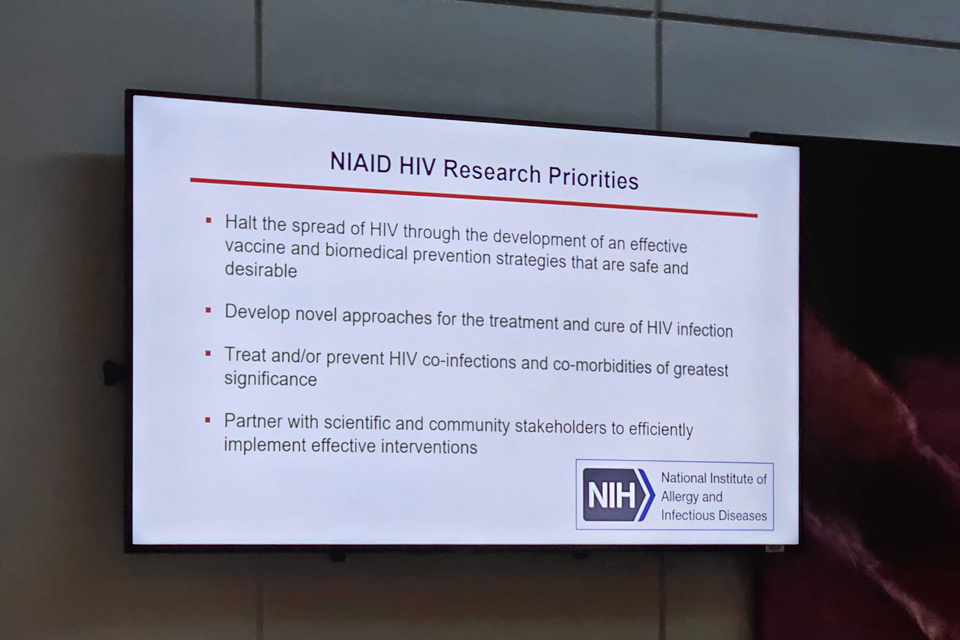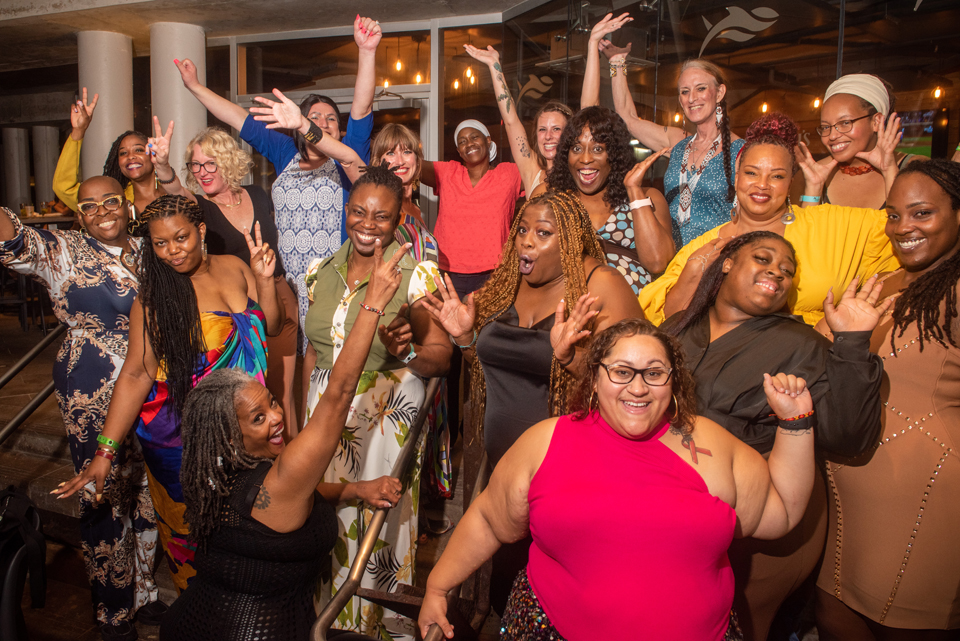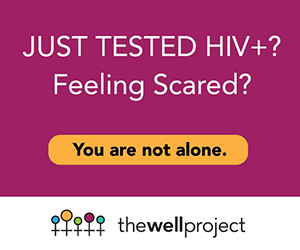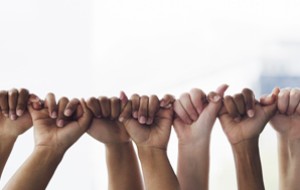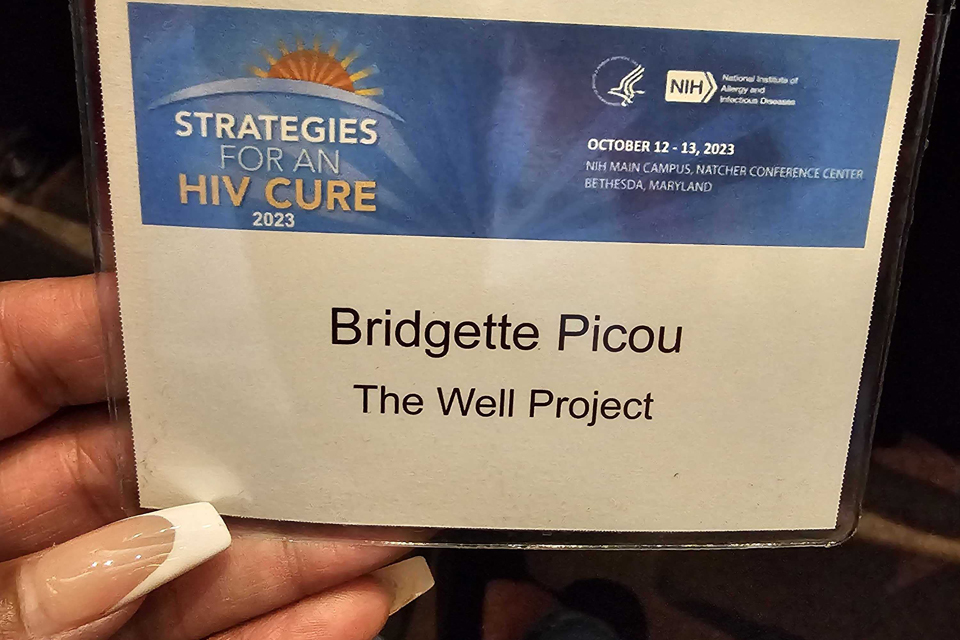
By Bridgette Picou, LVN
Cure in HIV is such a complex topic. Not only are there questions about if it's possible, but the HOW is multi-layered and multi-factorial. Those two things don't even consider the individual attitudes about a cure and if people would even want a cure. You can read about the basics of HIV cure in The Well Project's fact sheets – Finding a Cure for HIV and HIV Cure-Related Research Strategies. Know (in case you don't) that five people have been cured of HIV with a sixth potential person on the horizon. These cures have not happened in a way that can be scalable or equitable. Most have been from a circumstance of a "last resort" in cancer treatment for people living with HIV. That doesn't mean a more attainable cure is impossible!
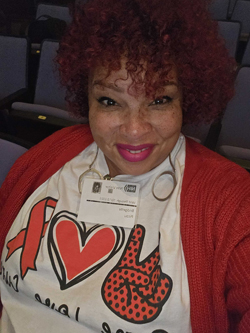
In October 2023, I attended a series of meetings dedicated to cure research. The Martin Delaney Collaboratory (MDC) is a program specifically geared towards HIV cure from the National Institutes of Health. Established in 2011 with the funding of just three Collaboratories, it has now grown to ten: CARE, DARE, BEAT-HIV, I4C, REACH, ERASE-HIV, CRISPR for Cure, PAVE, RID-HIV, and HOPE. The goal is to leverage common resources to accelerate the pace of HIV cure research and engage the next generation of HIV cure researchers. There are three basic aims for the science:
- Characterization of HIV reservoirs in the body
- Therapeutic strategies and/or innovations that target the reservoirs
- Studies (preclinical or clinical) to test strategies for an HIV cure, which may be a singular strategy or in combination with others
Each Collaboratory focuses on a specific way in which to do this. For example, RID HIV (Reversing Immune Dysfunction for HIV-1 Eradication), which is the Collaboratory I belong to, focuses on immune responses, the microbiome, and latency reversing agents; PAVE is research related to children and cure through immunity and the use of bNAbs (broadly neutralizing antibodies); while the CRISPR for Cure Collaboratory is focused on gene editing – that is, removing the HIV from the host DNA. They want to find and target where HIV spreads and hides in the body.
All the Collaboratories in fact have some focus on "latency." This is where HIV in the body hides or sleeps – and is a primary factor in why HIV is so hard to cure. These reservoirs persist even when the virus is fully suppressed in the blood (see U=U – Undetectable Equals Untransmittable). The science is dizzying! I could go through the different ways each Collaboratory is approaching the research, but this would be easily two thousand words or more. What's important is that these are multidisciplinary ventures between basic science, applied science, and clinical researchers studying HIV, its persistence, and developing potential curative strategies. The partnerships span across academia, industry, government, and community.
Community is where all of us come in. Each year the MDC holds a meeting with all the Collaboratories invited, along with their community advisory boards, to discuss the work as well as any advances that have been made and innovations that may be upcoming. It's a small space where community and science come together, idea-share, and goal-plan. On a personal note, I think it's worth saying that I think these types of meetings are important so that science can stay grounded in the people behind HIV, and so that people living with HIV can remain hopeful that we are not alone in the fight navigating this disease. I've blogged about this before, and it remains a focus for me.
I joined the RID HIV Collaboratory at the beginning of this year, so this was my first time attending the annual meeting. Also happening a few days before the annual MDC meeting, NIAID (National Institute of Allergy and Infectious Diseases), in conjunction with AVAC, was holding a meeting series. The first day was a public event, "Foundations of HIV Cure Research," which focused on basic science and included people in the room and an online zoom so community members could participate. The meetings were deeper dives into the things I mentioned above. Modalities, hypotheses, cell types, the microbiome, non-human primate models, smack memetics, and b-cells are just some of the words thrown around to try to make sense of.
The community members in these groups that attend are not shy about pointing out when language is discriminatory or stigmatizing, so that means sparks sometimes fly. As a language advocate myself, I love it. People must learn to put the human before the disease – regardless of being a scientist, researcher, or Joe/Jane Schmo on the street – in order for us to leave stigma behind. I have written other blogs on this, so I'll leave it at that.
My other issue is the need for explanations and language used to describe cure science in ways that are more easily translated to the community at large so that it not only makes sense, but is hopeful and encouraging. Which is partially what I consider my responsibility, as do others on the various CABs. However, the brunt of that should lie with those who do the work of science. There is a quote I like that is attributed to Einstein: "If you can't explain it simply, you don't understand it well enough." Some of the scientists at this meeting did a great job; some, not so much.
Nonetheless, the meetings hold value, and I am glad I have the privilege to attend. It's important we know that work IS being done towards cure. It's important we have resources we can go to so that we can understand what is happening in our bodies with HIV. It's also important we understand that, conspiracy theories aside, scalable and equitable cure is possible. It's likely to look like more than one intervention at a time. It may not look the same for everyone. There are many, many questions remaining – but people are working on it.
